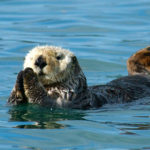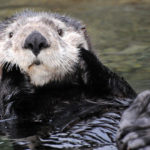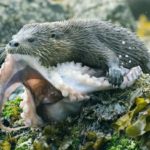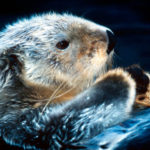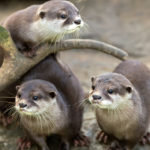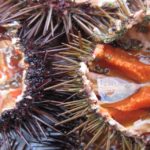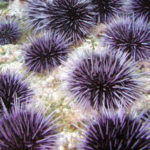Facts about Sea otters
 Being on the shore or resting in the water, sea otters take care of their chic fur for a long time, comb and smooth it. And still these cute creatures take care of the fur coat, as if playing: they often somersault and turn in the water, then ducking under the algae, then remaining on the surface. But in reality it is not entertainment at all. Such playful somersaults are needed to clear fur from food debris and various contaminants, and also to fill the undercoat with air.
Being on the shore or resting in the water, sea otters take care of their chic fur for a long time, comb and smooth it. And still these cute creatures take care of the fur coat, as if playing: they often somersault and turn in the water, then ducking under the algae, then remaining on the surface. But in reality it is not entertainment at all. Such playful somersaults are needed to clear fur from food debris and various contaminants, and also to fill the undercoat with air.
Deftly wielding short front paws and teeth, the otter first breaks the needles of sea urchins, gnaws the shell and extracts from it “delicious” entrails. Then, the empty eaten shell is sent “overboard”. Very often smart animals use for the breaking of shells and shells auxiliary objects – flat stones. During the underwater hunting they seize such a “tool of labor” from the bottom, lay it on their chests and beat the prey on the stone until they break its hard covers. By the way, with the help of the same stones, sea otters extract mollusks, which have grown to the bottom.
Very often, with food, sea otters are turned over. Moreover, prey during such upheavals remains a mysterious image on the belly of the animal. The thing is that the otter keeps food by paws, but these movements are so imperceptible and incredibly fast – any skilful conjurer could envy them!
In summer, when sea otters spend almost all their time in the sea, the way they sleep on the water looks very touching. The babies sleep on their mother’s chest, touching the head to her chin, and the adult individuals gently but firmly hold each other’s front paws. Of course, this is not love, but only a necessity – in fact, while the otter is asleep, it can be attributed far to the sea current, but how touchingly this plexus of hands is!
If the sea otter hunts alone, at the time of sleep, it prepares itself a kind of “anchor”. The animal spins for a long time in algae, winding them around, and then quietly falls asleep in an improvised cocoon.


